Iridology chart-The human iris contains intricate patterns unique to each individual, and according to iridology practitioners, these patterns may reveal valuable insights about our health. An iridology chart serves as a map that divides the iris into zones, each corresponding to different organs and systems within the body. Whether you’re curious about alternative medicine or seeking to understand what your eyes might reveal, this comprehensive guide will walk you through the fascinating world of iridology charts and their interpretation.
What is Iridology and Its Purpose?
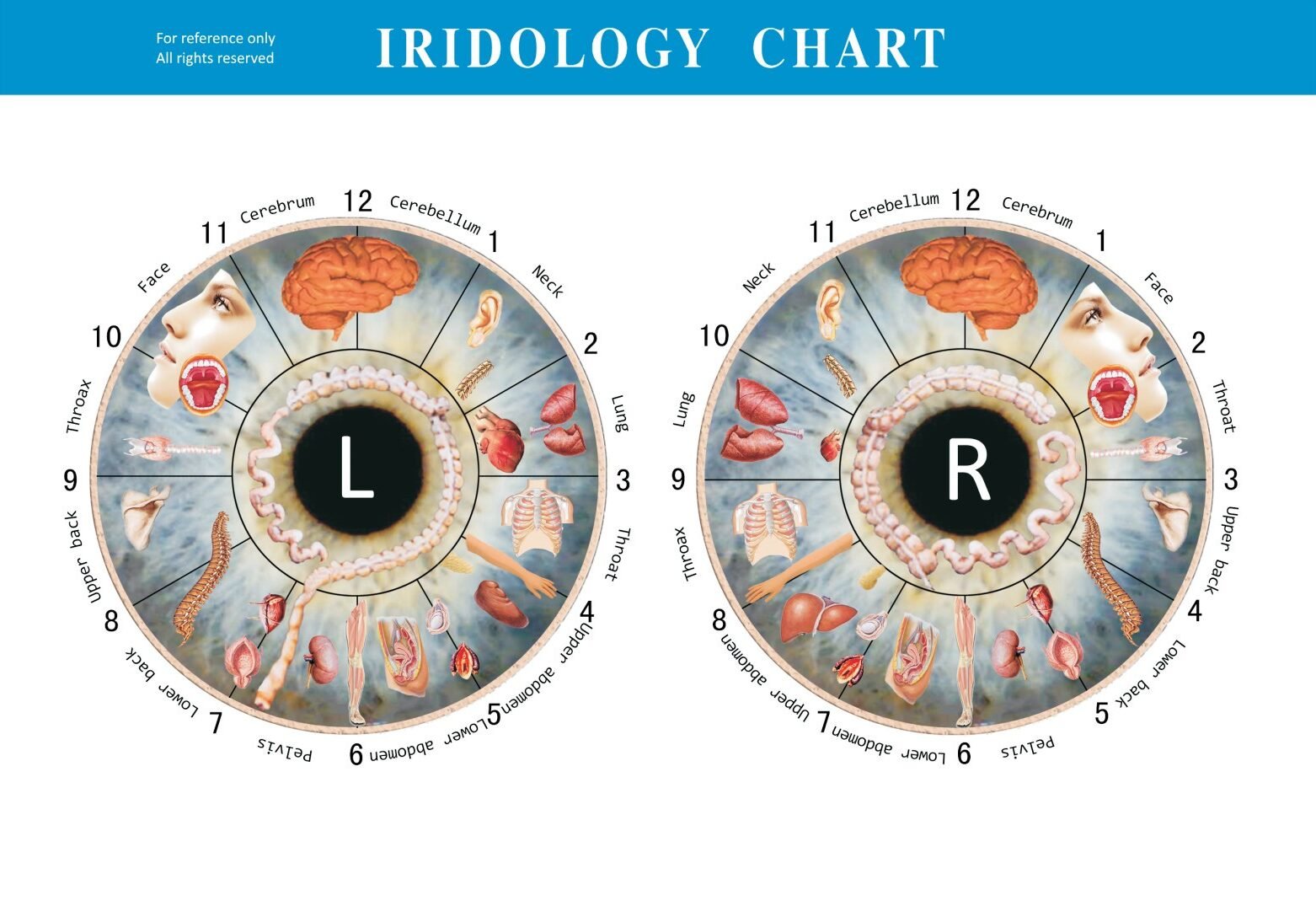

The intricate patterns of the human iris form the basis of iridology analysis
Iridology is the study of the iris—the colored part of the eye—to assess potential health conditions and predispositions. This alternative medicine practice is based on the theory that each area of the body is represented by a corresponding area in the iris. Practitioners believe that changes in these specific zones can indicate imbalances or health issues in the related body parts.
An iridology chart serves as a detailed map that divides the iris into multiple zones, creating a reference guide for practitioners to analyze patterns, colors, and markings. These charts typically display both the left and right irises, as each is believed to correspond to different sides of the body. The purpose of an iridology chart is to provide a systematic approach to iris analysis, helping practitioners identify potential health concerns before they manifest as physical symptoms.
Historical Overview of Iris Mapping


Early 20th century iridology chart showing traditional iris mapping techniques
The practice of examining the iris for health insights dates back to ancient civilizations. References to iris analysis can be found in ancient Egyptian texts, where physicians would observe changes in the eye to assess overall health. However, modern iridology as we know it today began taking shape in the 19th century.
Hungarian physician Ignatz von Peczely is often credited as the father of modern iridology. According to popular accounts, as a child, he noticed changes in an owl’s iris after the bird suffered a broken leg. This observation led him to develop the first rudimentary iris chart in 1881. Around the same time, Swedish homeopath Nils Liljequist independently developed similar theories after noticing changes in his own iris following medical treatments. Throughout the 20th century, practitioners like Bernard Jensen further refined these iris maps, creating the detailed charts widely used today.
Detailed Breakdown of Iris Zones
Modern iridology chart with color-coded zones corresponding to body systems
Iridology charts divide the iris into numerous zones, each corresponding to different parts of the body. Understanding these zones is essential for anyone looking to interpret an iridology chart. Here’s a detailed breakdown of the primary iris zones:
- Digestive Ring (Autonomic Nerve Wreath) – This appears as a circular ring around the pupil and represents the digestive system. Changes in this area may indicate digestive issues or food sensitivities.
- Lymphatic System Zone – Located in the outer portion of the iris, this zone relates to the lymphatic system and immune function. White markings here may suggest inflammation or congestion.
- Circulatory System Zone – Found in the middle region of the iris, this area corresponds to the heart and blood circulation. Dark spots or discoloration might indicate circulatory concerns.
- Respiratory System Zone – Typically located in the upper regions of the iris, this zone relates to the lungs and respiratory function. Markings here may suggest respiratory sensitivities.
- Urinary System Zone – Located in the lower portion of the iris, this area corresponds to the kidneys and bladder. Changes here might indicate urinary system stress.
- Endocrine System Zone – Scattered throughout specific points in the iris, these areas relate to various glands like the thyroid, adrenals, and pancreas.
- Nervous System Zone – Represented by the iris fibers radiating from the pupil, this zone relates to the nervous system. Broken or irregular fibers may suggest nervous system stress.
- Musculoskeletal Zone – Located in the outer regions of the iris, this area corresponds to muscles, bones, and joints. Markings here might indicate structural issues.
Iridology Chart Visualization
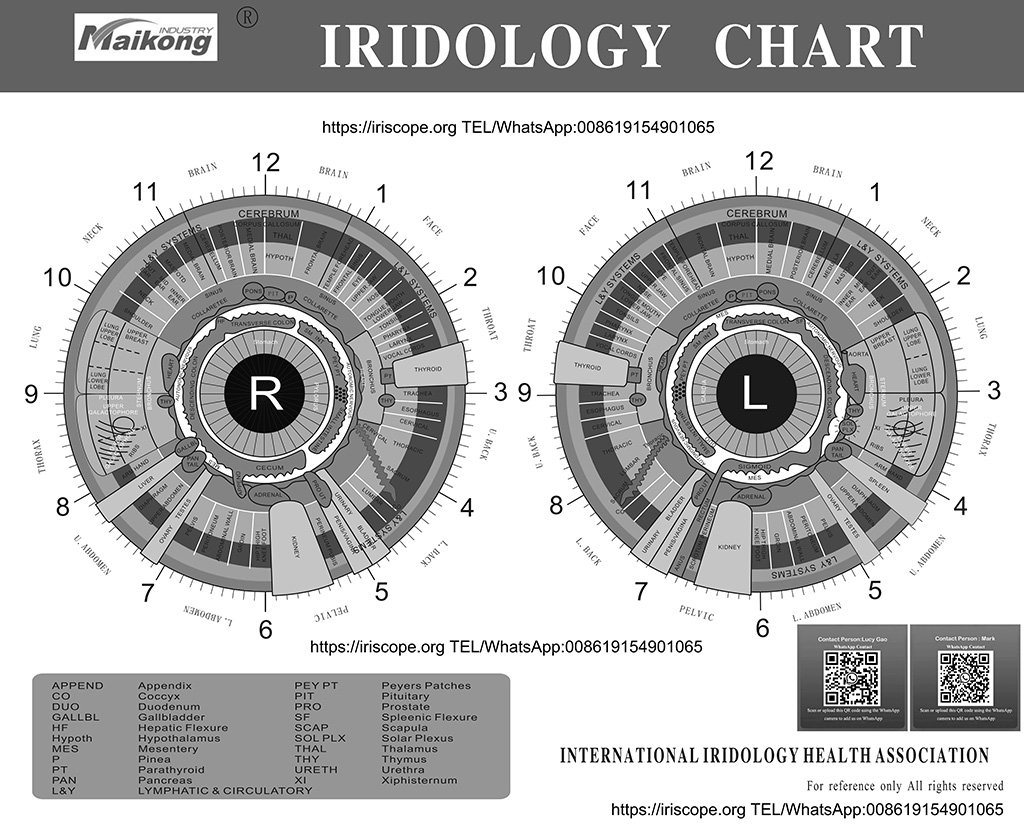
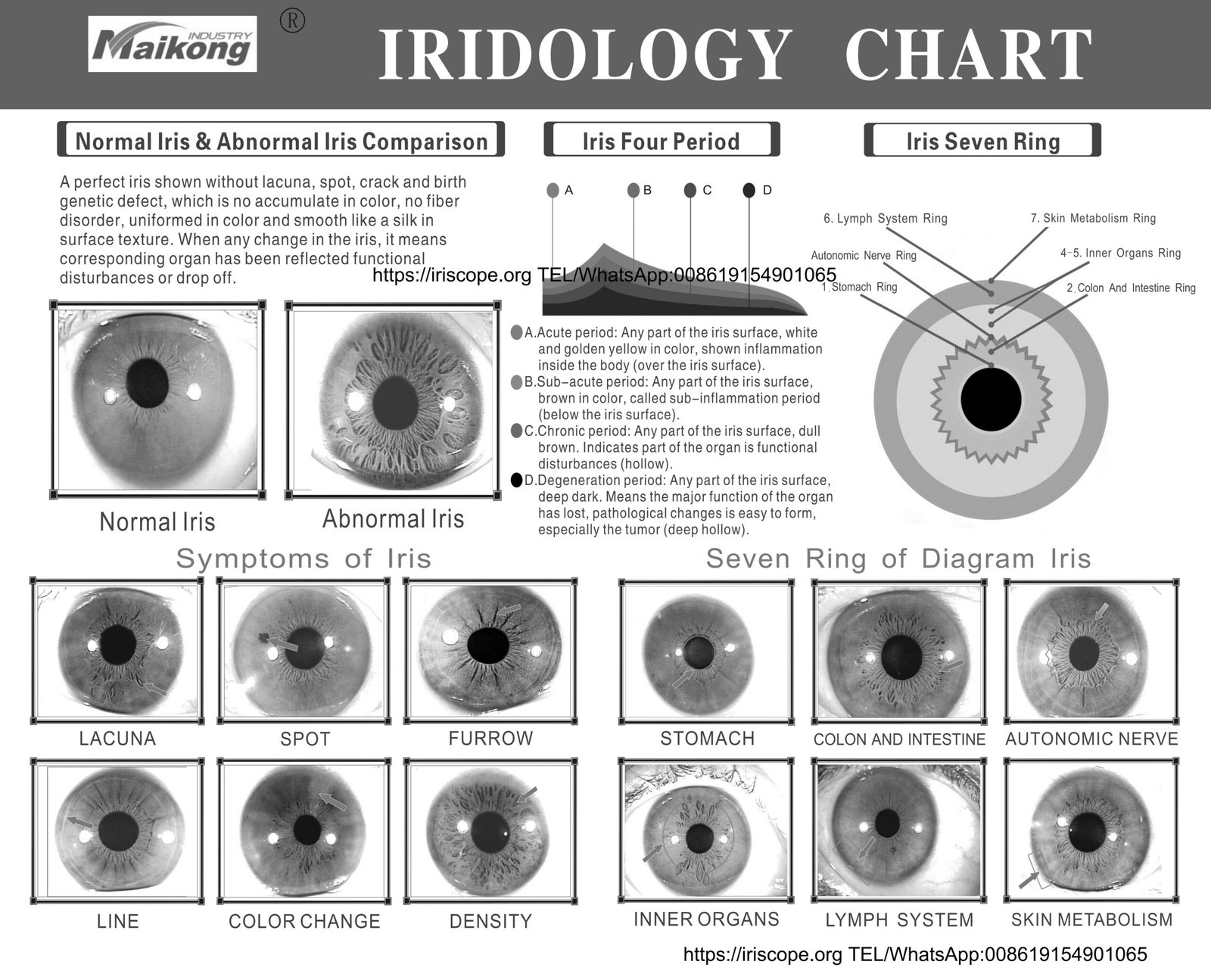
Example of a modern iridology chart mapping organ systems
The visualization above represents a typical iridology chart used by practitioners. Each colored section corresponds to a specific organ or system in the body. The chart is designed to be a reference tool when examining the iris, helping practitioners identify potential health concerns based on markings, colors, and patterns observed in specific zones.
Most modern iridology charts are color-coded for easier interpretation, with the iris divided into approximately 80-90 zones. Some charts also include additional information about what specific markings might indicate, such as white spots suggesting inflammation or dark spots potentially indicating toxin accumulation.
Understanding Iris Markings and Colors

Blue iris with various markings used in iridology analysis
In iridology, the color, texture, and markings of the iris are all considered significant. Blue eyes are believed to indicate a lymphatic constitution, while brown eyes suggest a more hematic (blood-related) constitution. Mixed colors may indicate mixed constitutional types.
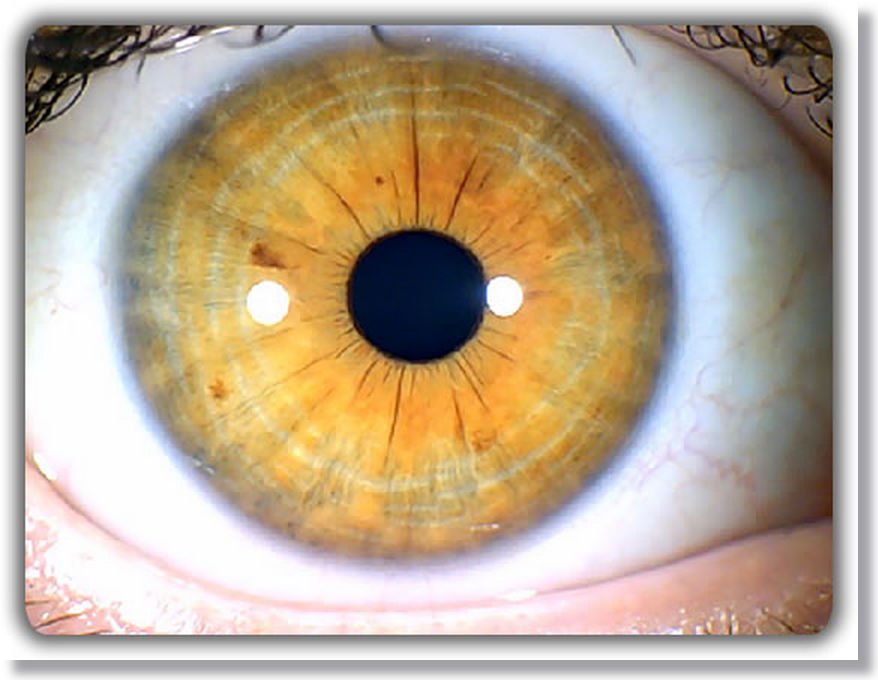
Brown iris with distinct markings analyzed in iridology
Specific markings in the iris are interpreted as signs of particular health conditions. White spots may indicate inflammation, dark spots might suggest toxin accumulation, and straight lines could represent nerve stress. The density and arrangement of iris fibers are also considered important indicators of overall health.
Scientific Perspective on Iridology
Scientific Criticisms of Iridology
- Lack of Clinical Evidence: Multiple controlled studies have failed to demonstrate that iridologists can consistently diagnose disease through iris examination. A notable study published in the Journal of the American Medical Association found that iridologists could not identify patients with kidney disease from their iris patterns.
- Inconsistent Methodology: There is no standardized approach to iridology. Different practitioners may use different charts and interpret the same iris markings in contradictory ways, leading to inconsistent diagnoses.
- Anatomical Discrepancies: The proposed connection between specific iris zones and body organs lacks anatomical or physiological evidence. The iris is primarily composed of connective tissue and muscles that control pupil size, with no established neural pathways connecting it to specific organs.
Despite these criticisms, some researchers continue to investigate potential correlations between iris patterns and health conditions. Some studies suggest that certain iris characteristics might have genetic links to specific health predispositions, though these findings remain preliminary and controversial in the medical community.
Want to Learn More About Alternative Health Perspectives?
Download our free guide “Navigating Alternative and Conventional Medicine” to explore different health approaches and how they might complement each other.
Download Free Guide
Practical Applications of Iridology Charts

A practitioner using an iridology chart during an iris analysis session
While scientific validation remains limited, many holistic health practitioners incorporate iridology charts into their practice. Here are some of the practical applications:
Holistic Health Assessment
Practitioners use iridology charts as part of a comprehensive health assessment. By examining the iris, they attempt to identify potential areas of weakness or predisposition to certain conditions, which can inform preventative health strategies.
Pattern Recognition
Experienced iridologists develop pattern recognition skills, using iridology charts to track changes in the iris over time. These observations may be used to monitor how lifestyle changes or treatments might be affecting overall health.
Client Education
Iridology charts serve as educational tools to help clients visualize and understand potential health concerns. This visual approach can sometimes make abstract health concepts more tangible and engaging for clients.
Getting Started with Iridology Chart Analysis

Basic self-examination using a mirror and light source
If you’re interested in exploring iridology, you can start with some basic self-examination. Using a small mirror and good lighting, observe your iris colors and patterns. Compare what you see with a basic iridology chart to begin understanding the potential connections between your iris and health.
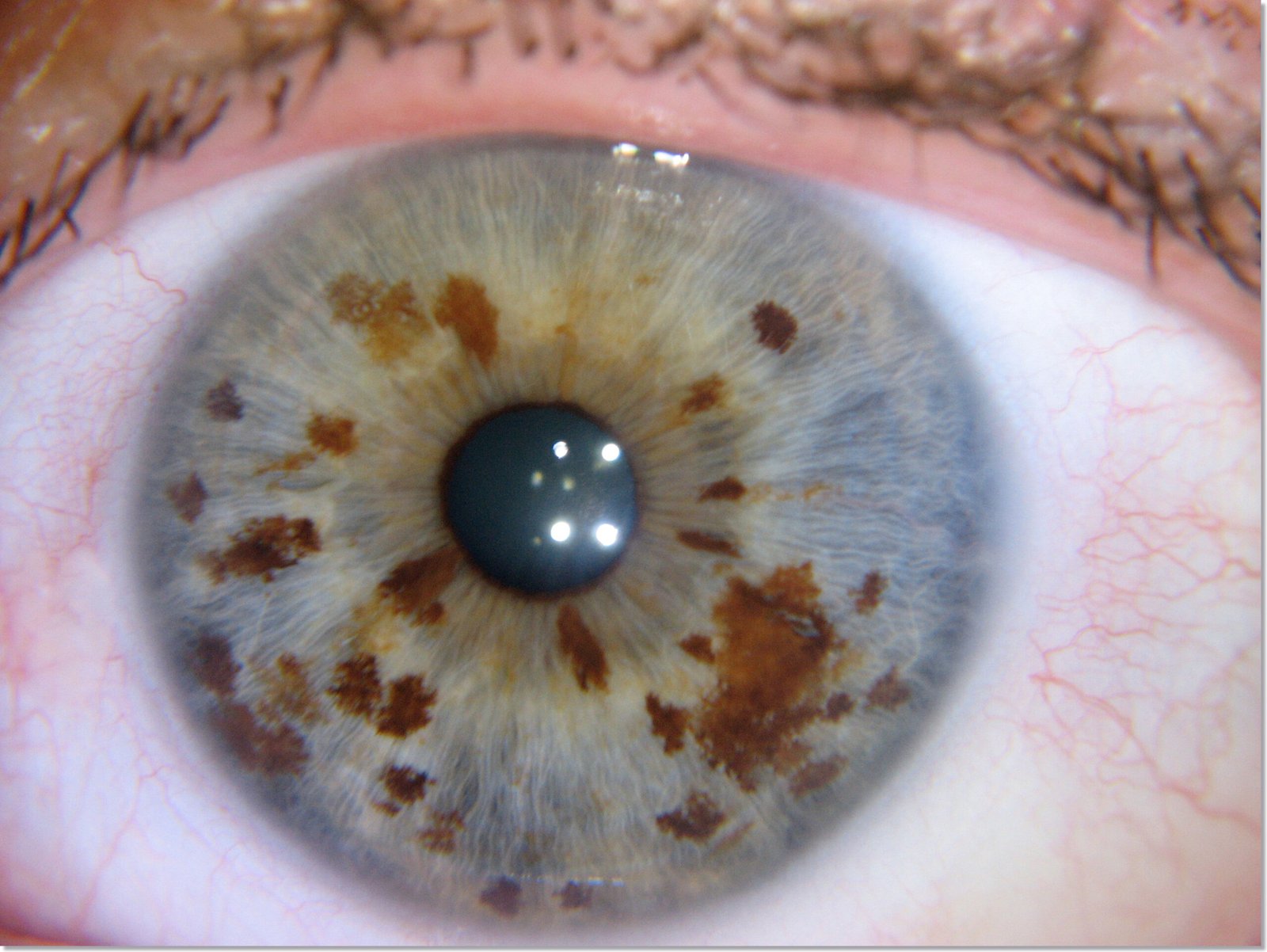
Professional iridology equipment for detailed analysis
Professional iridologists use specialized equipment like iris cameras and analysis software. These tools provide high-resolution images of the iris that can be examined in detail. If you’re serious about learning iridology, consider investing in a good reference book with detailed charts and possibly taking a course from an experienced practitioner.
“The iris never lies. It records changes in our bodies just three days after they occur, making it an invaluable tool for early detection of potential health concerns.”
– Bernard Jensen, Pioneer of Modern Iridology
Different Types of Iridology Charts

Traditional European-style chart
European Charts
Developed primarily from the work of European pioneers like Ignatz von Peczely, these charts tend to be highly detailed with numerous subdivisions. They often include specific correlations to organs and systems based on European medical traditions.

American-style Jensen chart
American Charts
Popularized by Bernard Jensen, American iridology charts often emphasize constitutional types and tend to be somewhat simplified compared to European versions. They frequently incorporate color-coding for easier interpretation.

Digital analysis chart
Digital Charts
Modern digital iridology charts are designed to work with specialized software and iris cameras. These often include interactive features, allowing practitioners to zoom in on specific areas and track changes over time with digital precision.
Conclusion: The Value and Limitations of Iridology Charts
Iridology charts offer a fascinating window into alternative health assessment methods. While scientific validation remains limited, many practitioners and clients find value in the holistic perspective that iridology provides. The intricate mapping of the iris through these charts continues to intrigue those interested in exploring the connections between different parts of the body and potential health indicators.
Whether you approach iridology with curiosity or skepticism, understanding these charts can provide insight into a practice that has persisted for centuries. As with many alternative approaches, iridology is best viewed as a complementary tool rather than a replacement for conventional medical diagnosis and treatment.
Ready to Explore Iridology Further?
Download our comprehensive iridology chart with detailed explanations of each zone and what different markings might indicate about your health.
Get Your Free Iridology Chart
Frequently Asked Questions About Iridology Charts
Can iridology diagnose specific diseases?
Iridology is not designed to diagnose specific diseases. Rather, it aims to identify areas of potential weakness or stress in the body. Practitioners use iridology charts to assess constitutional strengths and weaknesses, not to replace conventional medical diagnosis.
How accurate are iridology charts?
The accuracy of iridology charts is debated. While controlled scientific studies have generally not supported iridology’s diagnostic claims, many practitioners report successful outcomes when using these charts as part of a holistic health assessment. The interpretation of iris signs requires significant training and experience.
Do I need special equipment to use an iridology chart?
For basic self-observation, you can use a small mirror and good lighting. However, professional iridologists typically use specialized equipment like iris cameras that provide high-resolution images for detailed analysis. The more detailed your observation needs to be, the more specialized the equipment required.
Can iris color change over time?
While the basic color of your iris is genetically determined and generally doesn’t change, iridologists believe that markings, textures, and patterns within the iris can change over time, reflecting changes in health status. These subtle changes are what iridologists track using their charts.



























